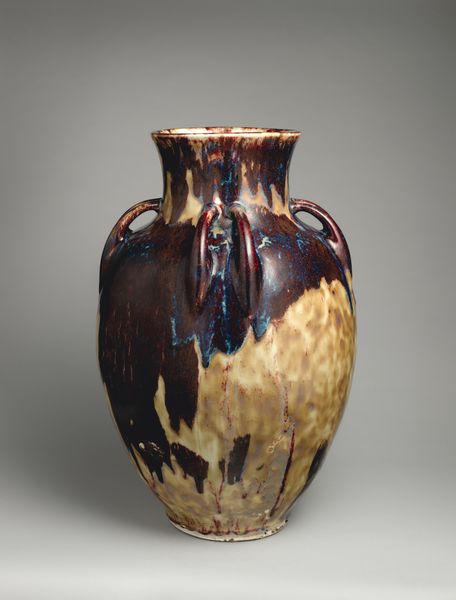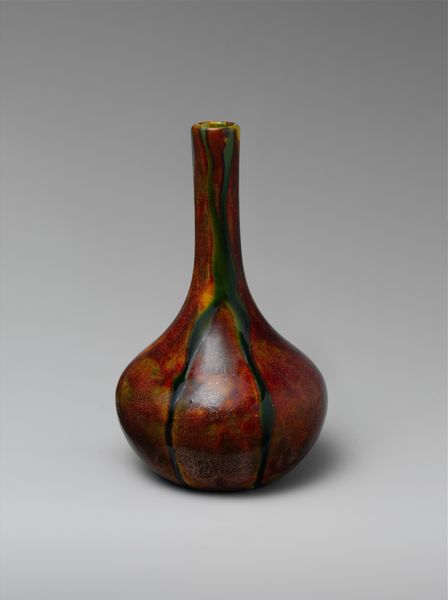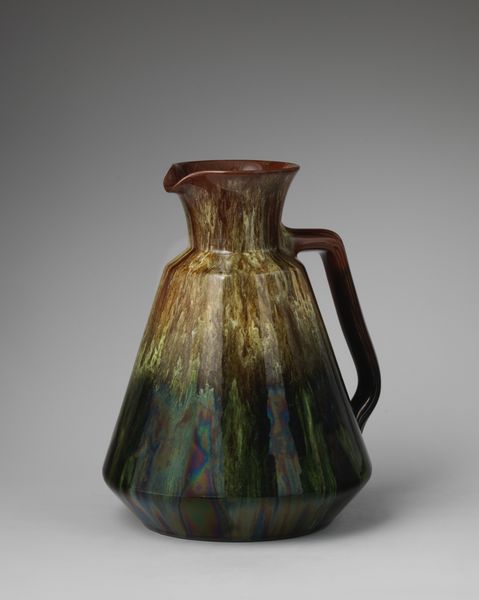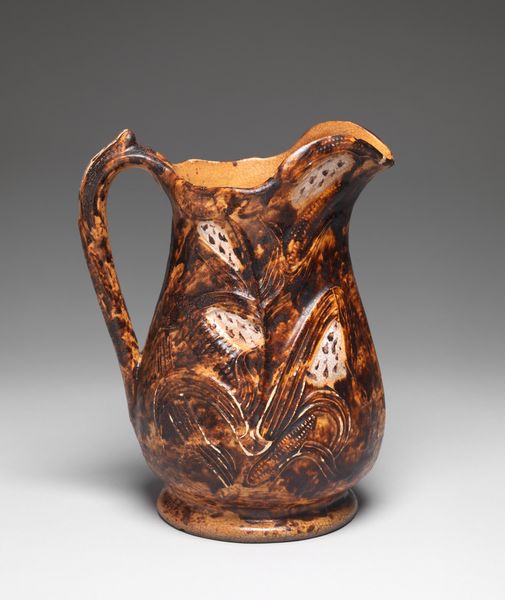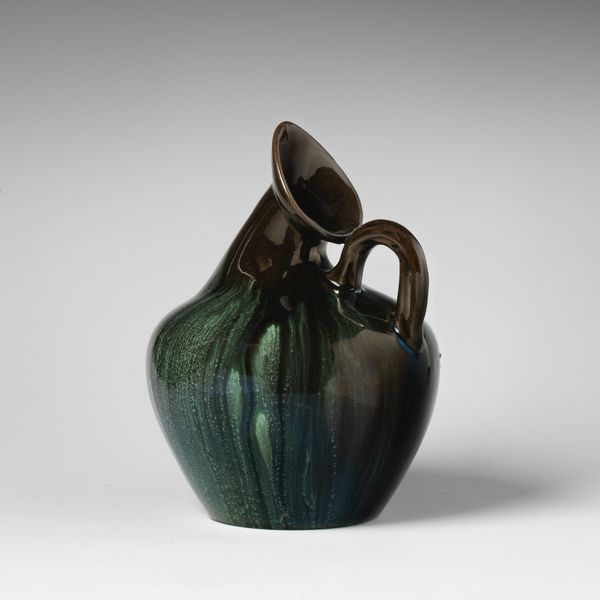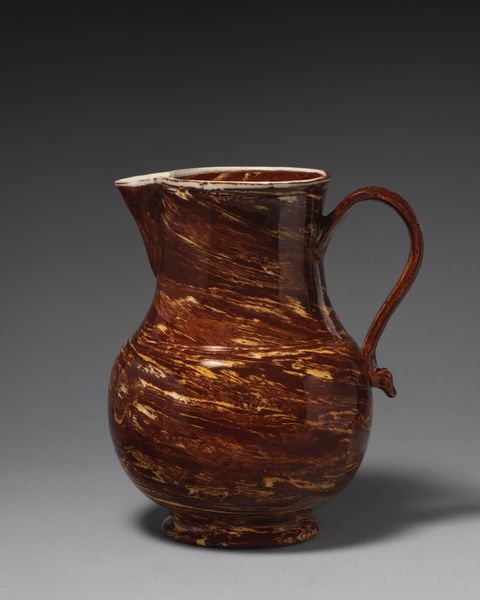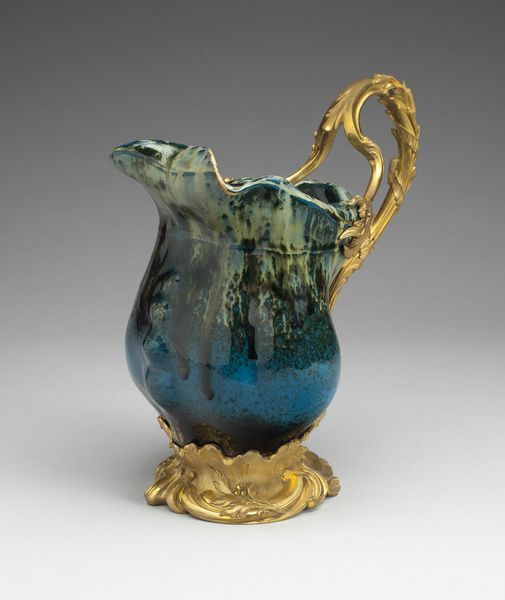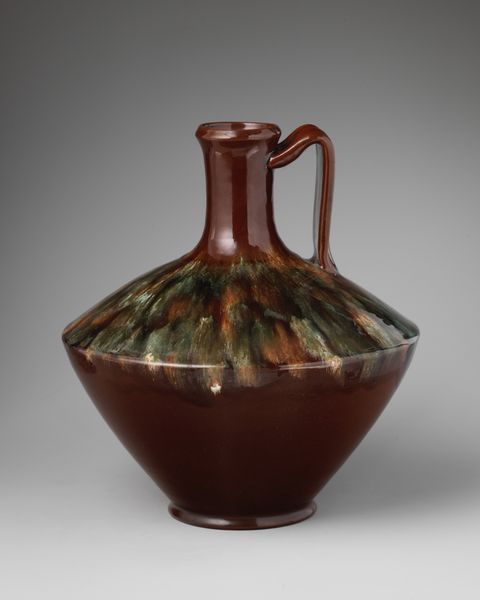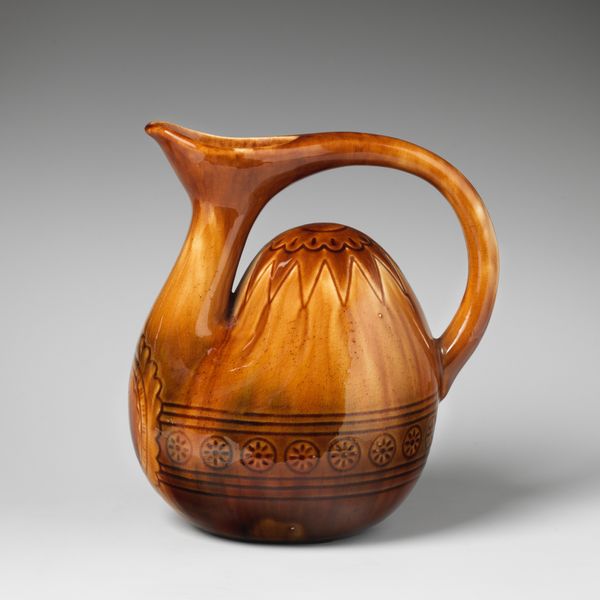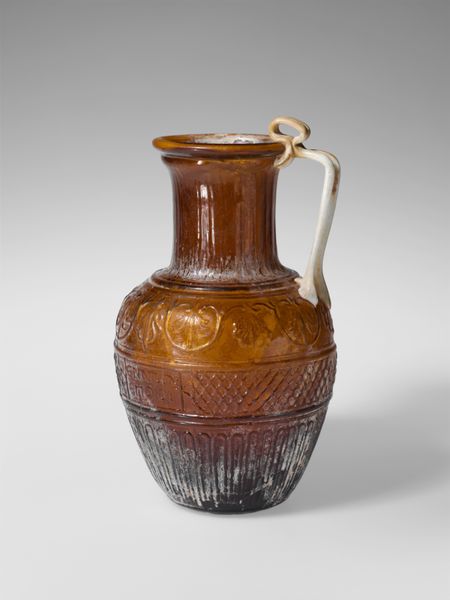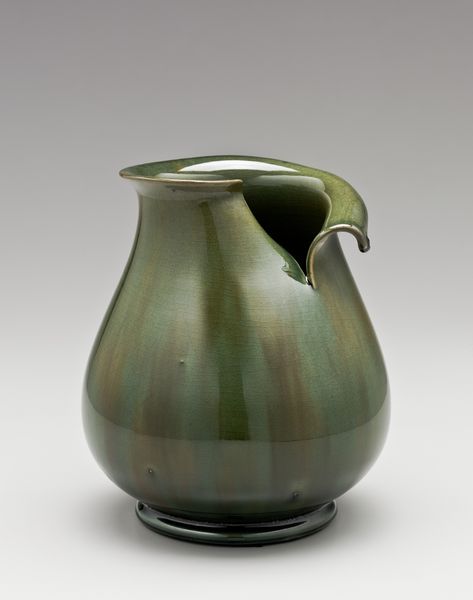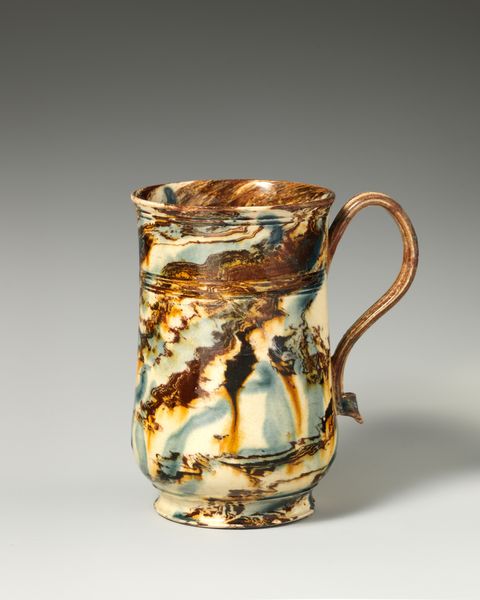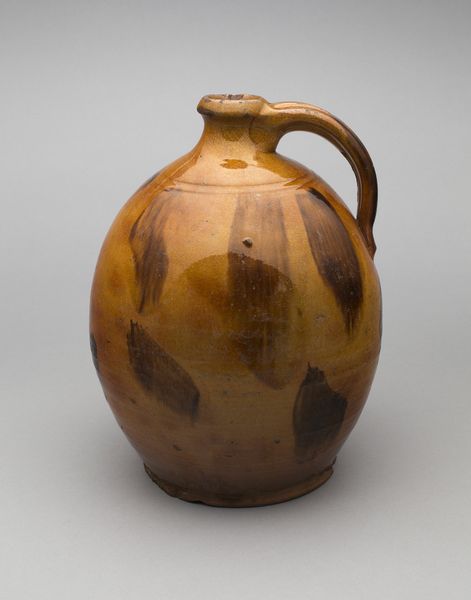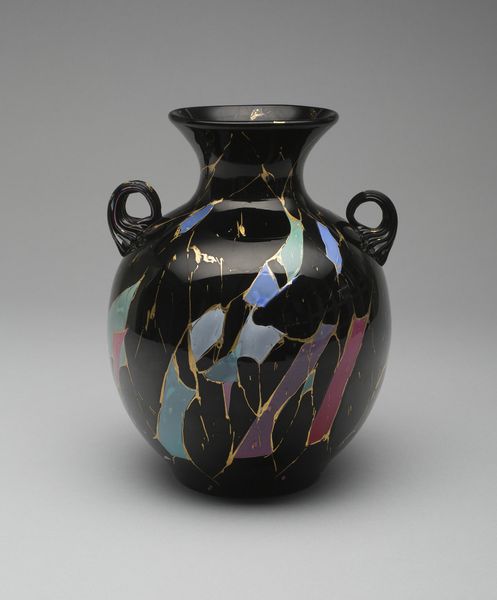
ceramic, sculpture
#
ceramic
#
sculpture
#
food art
#
decorative-art
Dimensions: Height: 8 7/16 in. (21.4 cm)
Copyright: Public Domain
Curator: I am immediately struck by how this object feels ancient, unearthed, something essential reclaimed from the depths. Editor: Interesting. I see something very different initially. It’s very organic—but for me, it screams late-Victorian décor, all that aesthetic movement pursuit of naturalism in manufactured goods. Curator: Exactly! What is more primal than the forms of the earth imitated? This is a stoneware pitcher crafted by the Linthorpe Pottery Works between 1879 and 1882, so right in that historical moment that you speak of, but, still, it imitates timeless, archetypal pottery shapes from across human history. Editor: The glazes feel deliberately evocative: those browns swirling into teals and blues suggest landscape, the colors of both earth and water, very indicative of the desire to bring idealized nature into the domestic space for a rising industrial and commercial class. The colors look accidental, natural, but its manufactured and decorative—do you agree that it carries this contrast within itself? Curator: Absolutely! It points to something enduring through familiar shapes—we read continuity, reassurance, perhaps a romanticism of an imagined rural past—in the way this humble pitcher mirrors classical forms in its silhouette. The shape echoes Greek water jugs from millennia prior. And, in this iteration it offered some familiarity to newly-urbanized, increasingly dislocated communities. Editor: True. And I want to bring up a very essential contradiction of decorative objects, generally: isn’t there an implicit social message here in who had access to beauty and these symbolic linkages back to this timeless pastoral fantasy? It definitely makes me reflect on that era and who benefitted from industrial capitalism and these kinds of objects that tried to distract from its costs. Curator: That contrast certainly invites an active looking: not just consumption, but a reflective observation, to unlock the pitcher’s multiple associations. To connect its clay not just to land, labor and resources in Britain, but even to long-enduring motifs and techniques—its patterns and shape remind me so strongly of pottery traditions worldwide. Editor: Agreed. Looking at the Pitcher makes you realize nothing emerges from a vacuum—the beauty is wrapped up in a complex historical moment. Curator: Indeed. Hopefully these few minutes prompt everyone listening to consider it not only as an artwork, but an entire visual record of society’s cultural memory, to engage with its inherent symbolic power!
Comments
No comments
Be the first to comment and join the conversation on the ultimate creative platform.
